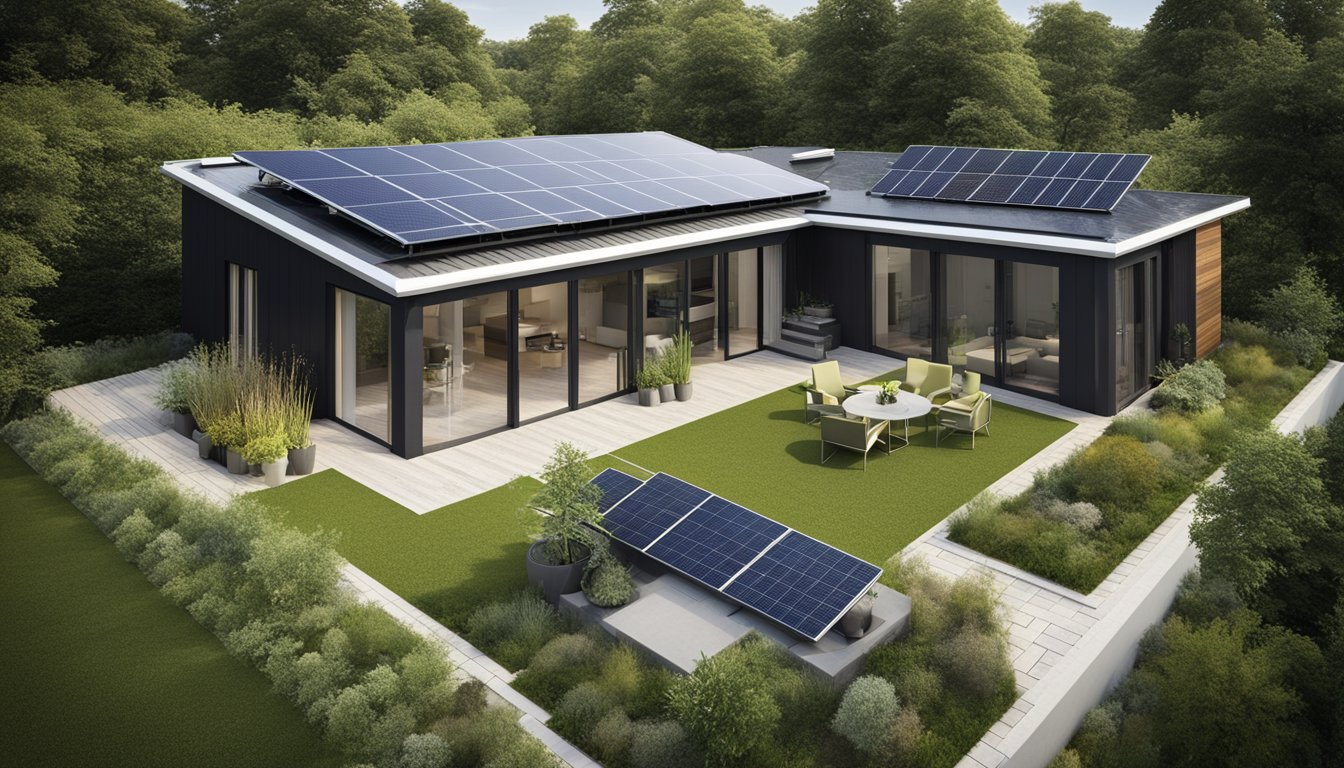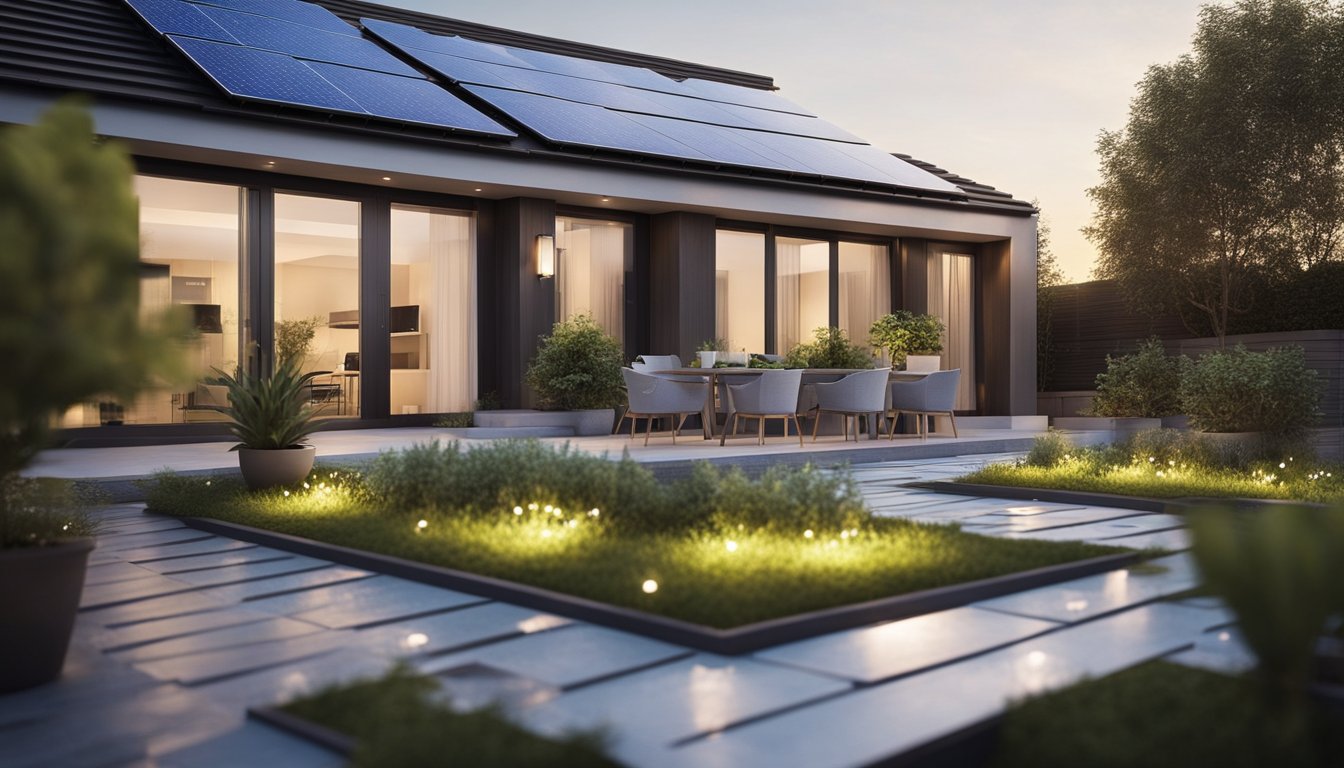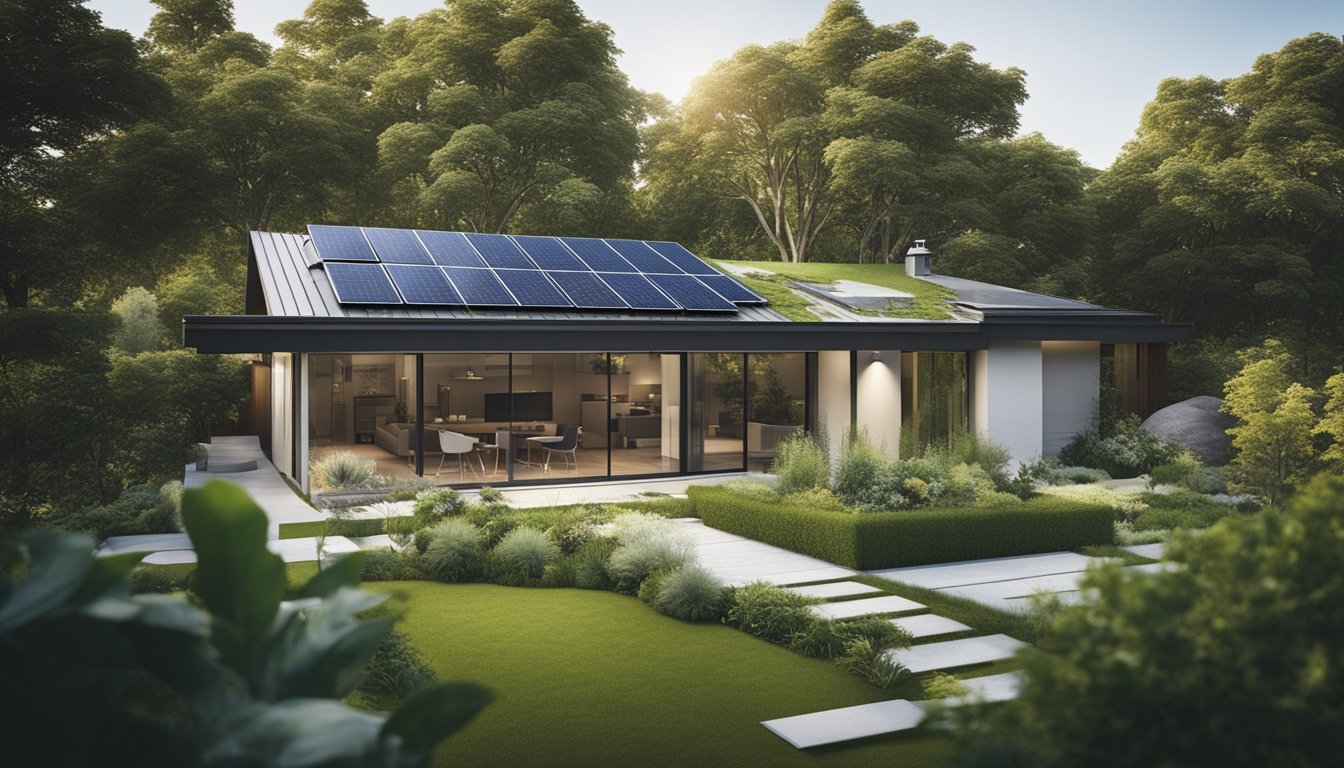Late updated: 11 Feb 2025 11:02
Written by: Daniel Harper
Innovative Ideas For Eco-Friendly Home Extensions: Sustainable Solutions for Modern Living
Embarking on the journey of expanding our homes offers a unique opportunity to align with sustainable living practices. Embracing innovative ideas for eco-friendly home extensions not only increases our living space but also reduces our environmental footprint. By thoughtfully planning and incorporating sustainable materials and technologies, we can create extensions that are as kind to the planet as they are beautiful.

The key lies in smart design choices that integrate seamlessly with our existing structures while prioritising energy efficiency. Implementing renewable energy sources, such as solar panels, and using recycled materials can significantly enhance the eco-friendliness of our home extensions. These measures not only lower our carbon footprint but also promise long-term savings on energy bills.
Our approach to eco-friendly home extensions also focuses on creating healthy indoor environments through natural ventilation and lighting. This not only improves our quality of life but also reduces reliance on artificial climate control systems, further conserving energy. By employing these innovative strategies, we craft living spaces that are sustainable and harmoniously integrated with nature.
Key Takeaways
- Eco-friendly extensions reduce environmental impact.
- Renewable energy and recycled materials are crucial.
- Natural ventilation enhances energy efficiency.
Planning Your Eco-Friendly Home Extension
In planning an eco-friendly home extension, focusing on sustainable design, material selection, and energy systems is vital. Each element significantly influences energy efficiency, environmental impact, and long-term sustainability.
Understanding Sustainable Design Principles
Embracing sustainable design principles is the first step in our eco-friendly journey. By prioritising energy-efficient layouts, we ensure minimal heat loss and optimal natural lighting. Our goal is to create spaces that work with nature, not against it. We should consider passive solar design, using windows and shading to regulate temperature. An open layout can enhance airflow, reducing the need for artificial heating and cooling. This approach not only supports a comfortable living environment but also contributes to significant energy savings.
Selecting Sustainable Materials and Resources
Choosing the right materials is crucial in our pursuit of sustainability. Utilising reclaimed wood, recycled steel, or bamboo can dramatically lower the environmental footprint of our extension. These materials are not only eco-friendly but also contribute to the aesthetic appeal of the space. FSC-certified timber ensures responsible sourcing, while recycled glass and cork provide innovative alternatives. Sourcing materials locally reduces transport emissions, adding another layer of sustainability. By prioritising natural and recycled materials, we can support greener building practices while achieving lower utility bills.
Incorporating Renewable Energy Systems
Incorporating renewable energy systems is a formidable step towards sustainable living. Solar panels and wind turbines are popular choices for generating clean energy. By installing these systems, we can reduce dependency on non-renewable energy sources, enabling significant energy savings. Heat pumps, another efficient option, can be used for both heating and cooling, making them versatile. When planning energy systems, assessing the specific needs of our extension and geographic considerations is essential. Investing in these technologies not only reduces our carbon footprint but also leads to lower energy costs over time.
Implementing Eco-Friendly Features and Technologies

Incorporating eco-friendly features in home extensions enhances sustainability and boosts efficiency. By focusing on insulation, smart technologies, and water management, we can significantly reduce environmental impacts.
Advancing Home Efficiency and Insulation
Energy efficiency is paramount when extending our homes. High-quality insulation plays a crucial role in reducing energy consumption. Energy-efficient windows prevent heat loss, maintaining comfortable temperatures while lowering energy bills. Green roofs offer excellent thermal mass, reducing heat gain and improving insulation. In passive solar design, strategic placement of windows supports natural heating and lighting.
Recycled materials, such as recycled metal, can be incorporated for a sustainable structure. By focusing on maximised insulation, we decrease reliance on heating and cooling systems.
Adopting Smart Home Technologies
Technology integration optimises our home's energy efficiency. By using smart home technologies, we can control lighting, heating, and appliances remotely, enhancing convenience while reducing energy usage. LED lighting is an efficient choice, using less power and lasting longer. Energy-efficient appliances, including air source and ground source heat pumps, offer sustainable alternatives for heating and cooling.
Smart thermostats and sensors ensure precise energy use, adapting to our needs. As part of our home extension plans, incorporating these advanced systems contributes to a greener environment.
Enhancing Water Conservation and Management
Water management is key to sustainable extensions. We can install low-flow fixtures, such as taps and showerheads, to minimise water usage. Harvesting rainwater with a rainwater harvesting system allows us to utilise natural resources for irrigation and flushing toilets.
Implementing natural ventilation improves indoor air quality while reducing reliance on air conditioning. Incorporating biophilic design, like living walls, enhances the aesthetic while aiding water management. By focusing on conservation and efficient management, we ensure that our eco-friendly extension meets modern sustainability standards.
Frequently Asked Questions

In the world of eco-friendly home extensions, there's great potential for combining sustainability with modern design. From incorporating renewable materials to leveraging energy-efficient technologies, several strategies can enhance your home's ecological footprint.
How can one incorporate sustainable materials into home extensions?
Using sustainable materials like bamboo, reclaimed wood, and recycled metal can make your extension both eco-friendly and stylish. Innovative options such as sheep's wool and cellulose pulp offer insulating properties while maintaining environmental responsibility.
What are the best environmentally-friendly technologies for home improvements?
Solar panels, ground-source heat pumps, and rainwater harvesting systems are some top technologies to consider. These options not only reduce reliance on non-renewable energy but also help save on utility bills.
What design principles should be considered for an eco-friendly home renovation?
Passive design principles, such as maximising natural light and heat through strategic window placement, can significantly reduce energy needs. Incorporating a green roof can improve insulation and support biodiversity.
How does one ensure energy efficiency in a newly extended part of a home?
Energy efficiency can be achieved by using triple-glazed windows and LED lighting. Efficient water management systems and energy-rated appliances are also crucial in maintaining a low energy footprint in your extension.
What are some small-scale eco-friendly home extension ideas?
Consider building an extension with recycled materials or using eco-friendly paints and finishes. A small conservatory that utilises natural light can also serve as an extension with minimal ecological impact.
How can existing buildings be renovated to improve sustainability?
Renovations can include adding high-quality insulation and upgrading to energy-efficient appliances. Retrofitting older homes with double-glazed windows and efficient heating systems also contributes to improved sustainability.
